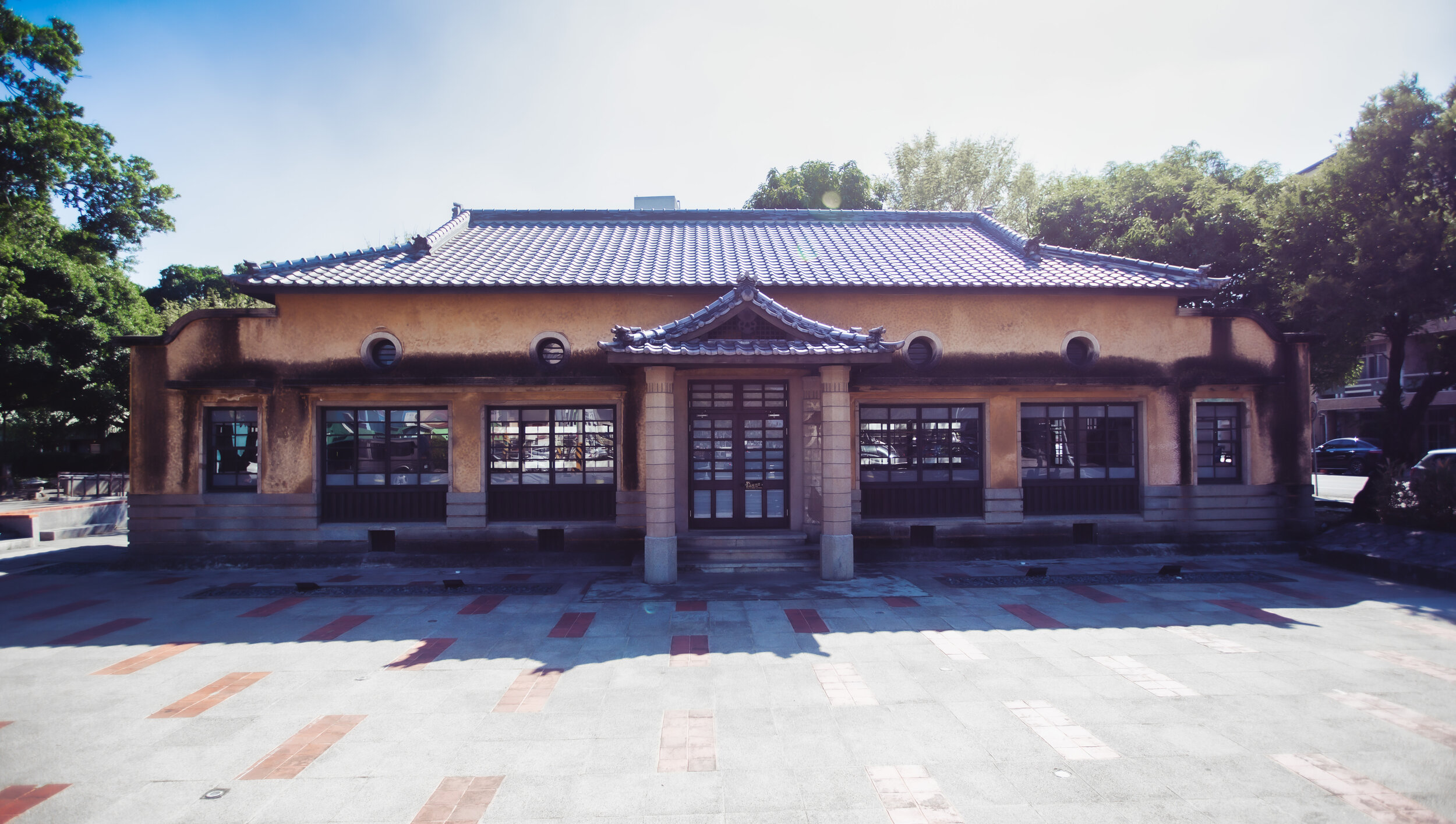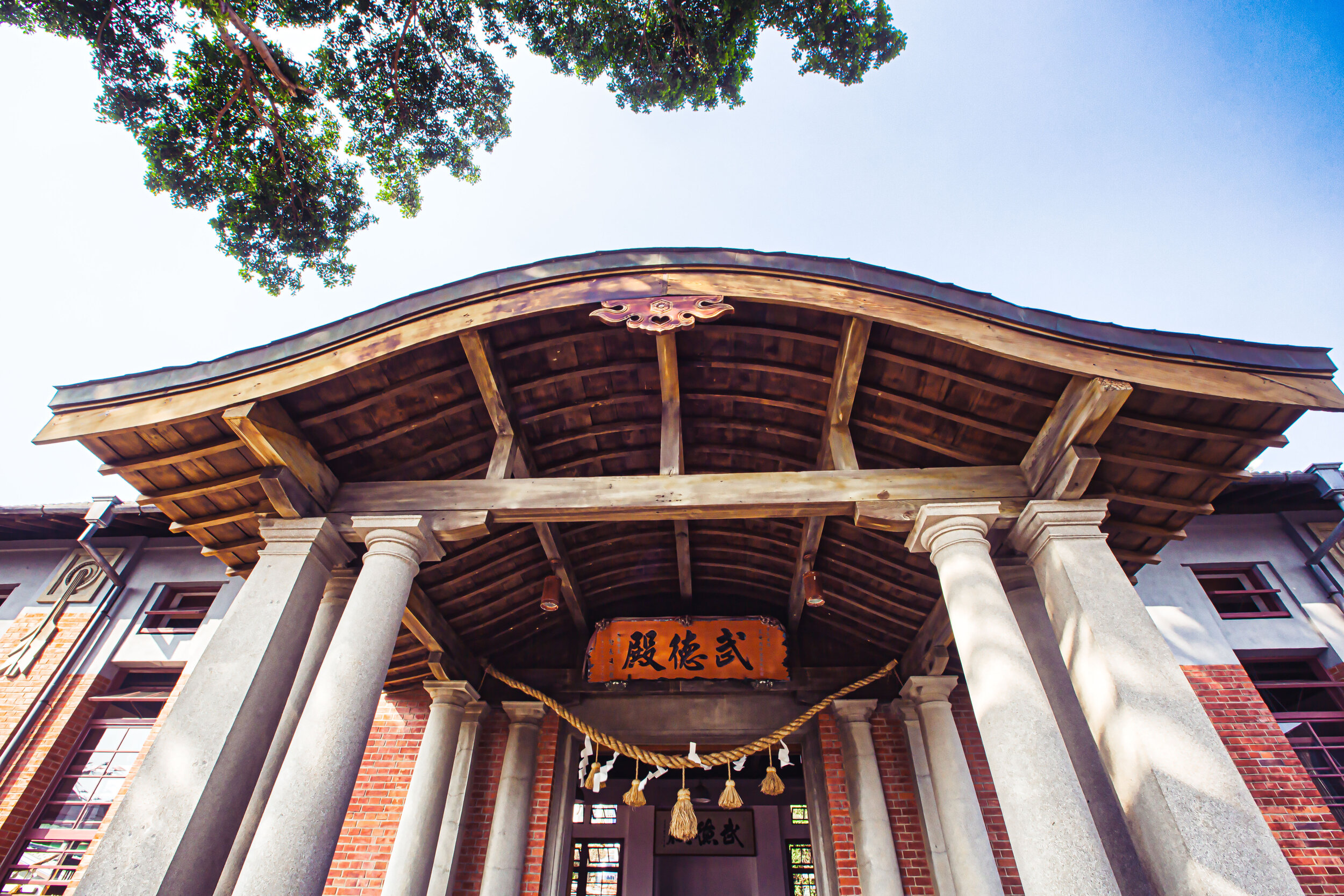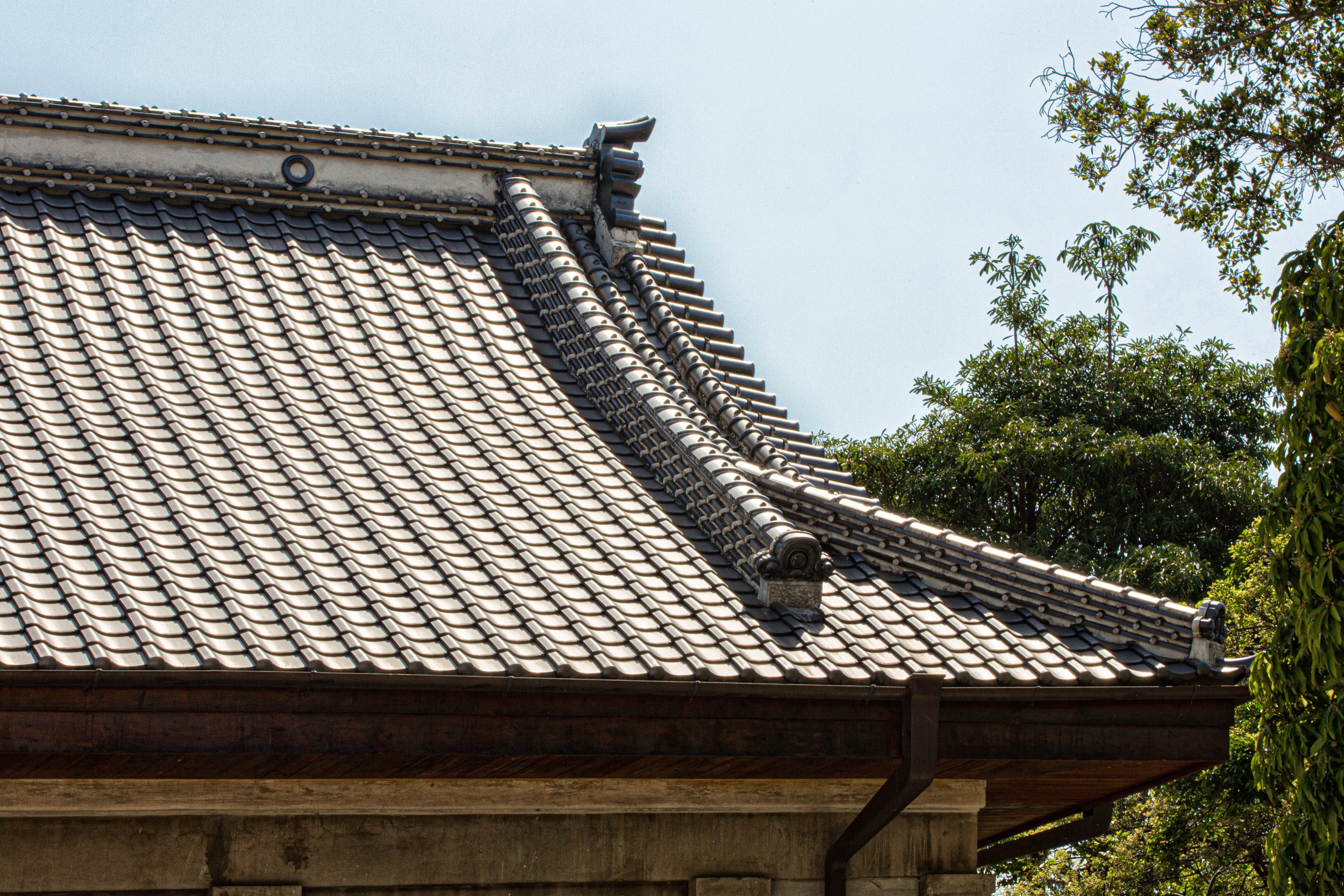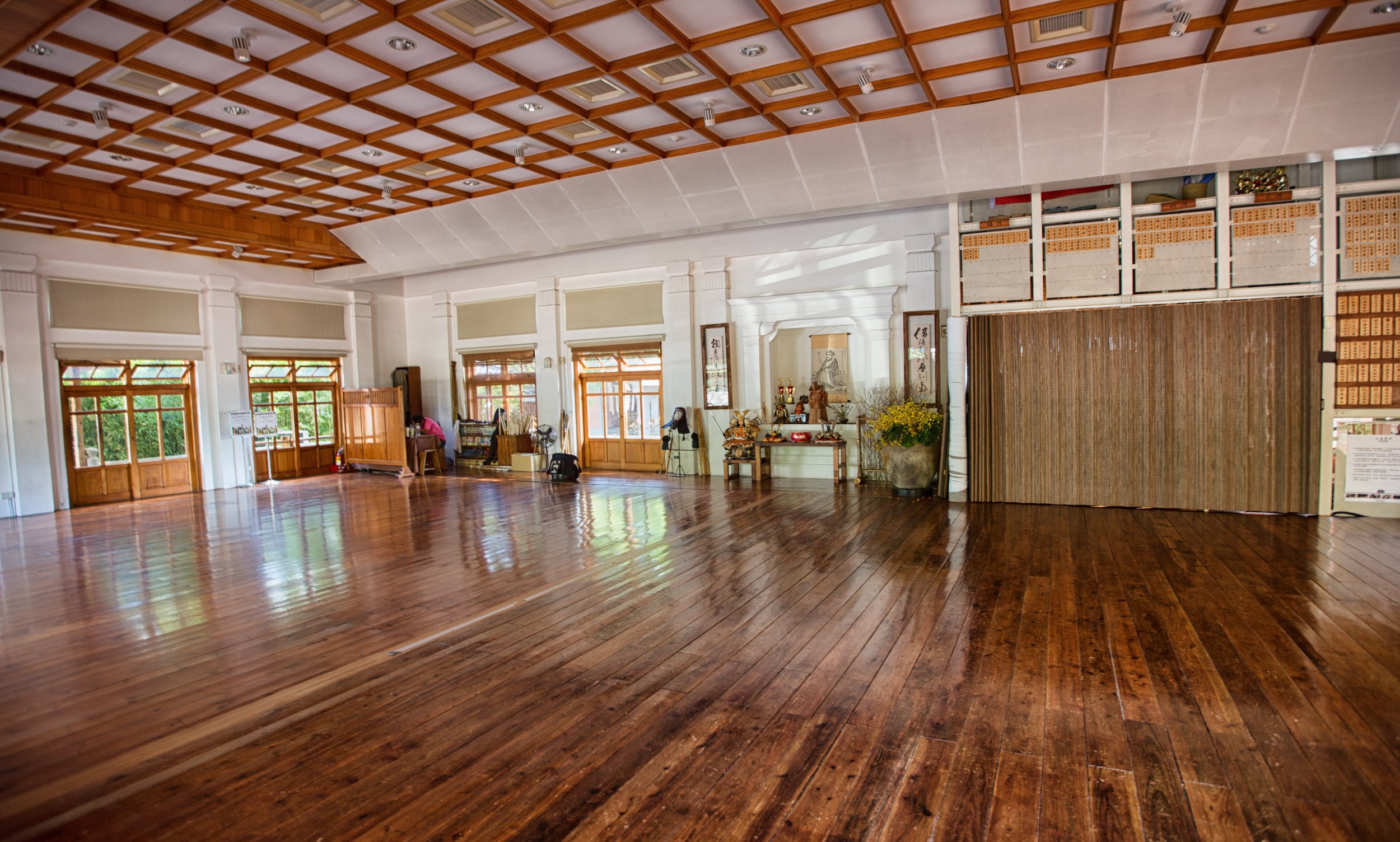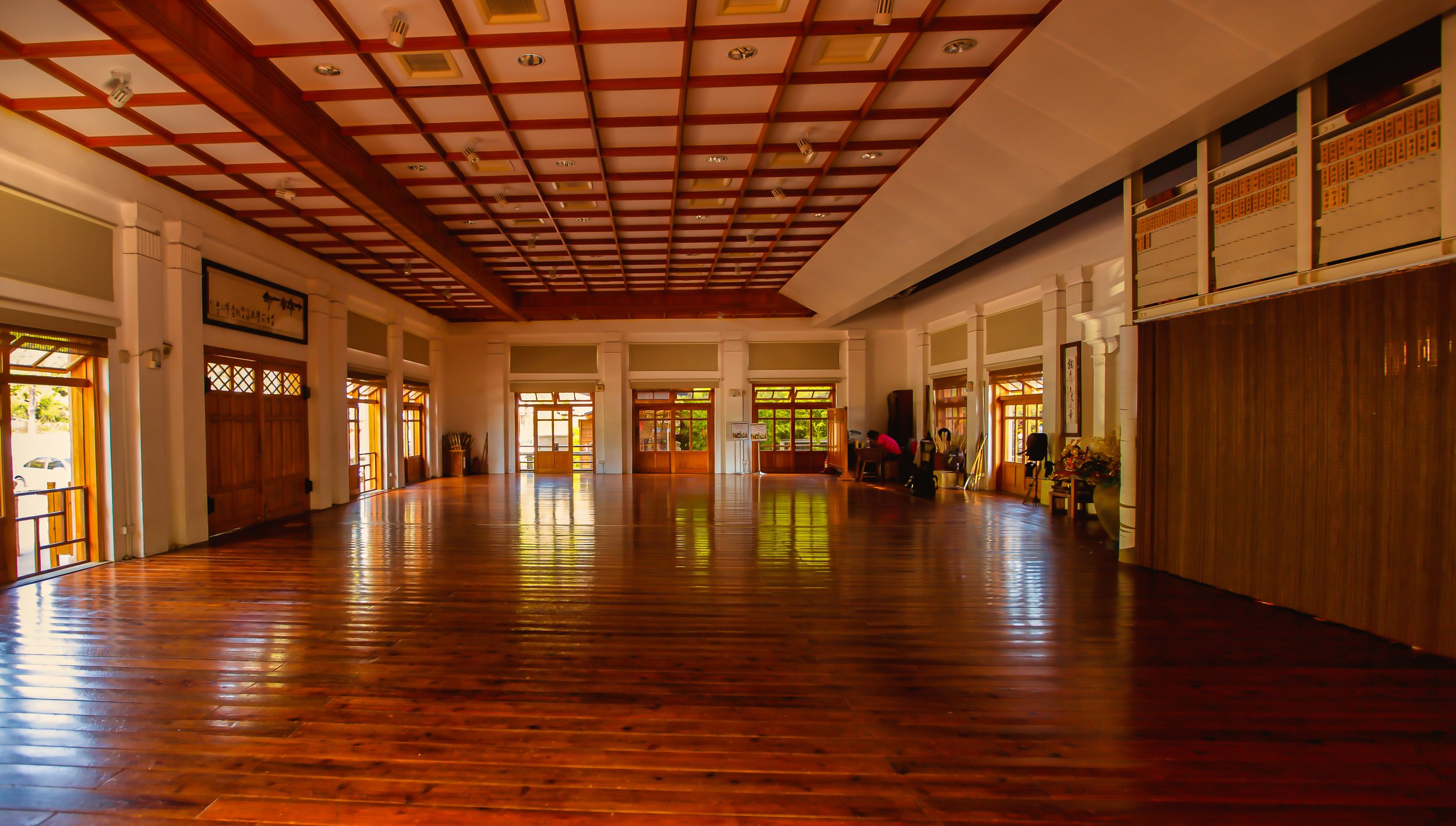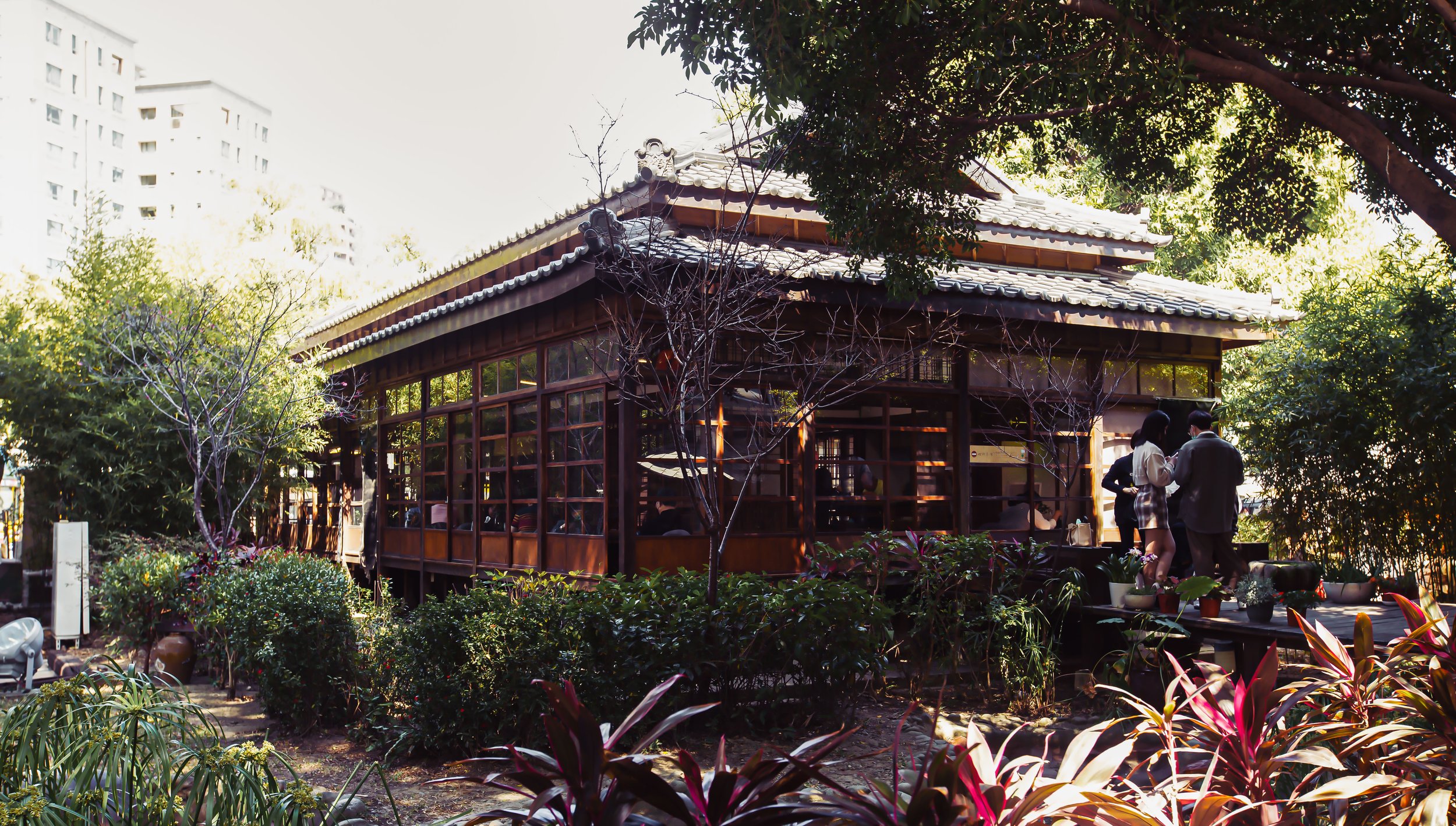When I first started writing this blog, I didn’t really have much of an idea of the direction it was going to take.
My goal was to use my photography and my travel experience as a method of promoting travel in Taiwan, but that admittedly was just one of the ways that I hoped I’d be able to drive traffic to this site.
From the outset, I never really expected that I’d end up where I am now with a number of personal projects that consume a large portion of my free time researching, translating information and writing these articles.
Now that I’ve been at this for quite a few years, I’m happy to say that all of the work I’ve done hasn’t been a complete waste as in the process I’ve improved my translation abilities and have learned so much about Taiwan.
That being said, given all that I’ve learned over the years, one of the things that I’ve been busy with lately is going through older articles to update them and more importantly correcting some of the erroneous information.
If you’ve been following this space for any period of time, it’s probably painfully obvious that one of my major projects has been exploring the history of Taiwan’s Japanese Colonial Era, and the various buildings that remain around the country from that era.
That all started in 2017 thanks a suggestion from my friend (and fellow blogger) Alexander that I visit the Longtan Martial Arts Hall (龍潭武德殿) near where I lived, and close to somewhere I was headed one day.
That suggestion sparked a fire and has resulted in my visiting almost all of Taiwan’s remaining Martial Arts Halls, making this site one of the most important resources for English-language information about them on the internet.
That being said, every time I write an article about one of the halls, I end up providing an abbreviated history of what they’re about and why they’re important. All of that comes to an end with this article, which will do the job of introducing the history of the halls and where you can find them.
My hope is that this will be better for you the reader, and myself as well as I’ll be streamlining the writing process about these halls so I can keep them more concise while also spending more time on important details.
Below I’ll introduce the purpose of these Martial Arts Halls, their history, organizational structure, architectural design and where you can find them in Taiwan. I’ll also provide links to each of the individual articles that I’ve written about so far, which should make navigating them much easier.
Even though my ongoing work on the Japanese Colonial Era has since expanded to include a variety of other historic buildings, it all started with these Martial Arts Halls, which is a project that is near and dear to my heart.
But with only a few more left to write about, will soon be completed.
If you are travelling in Taiwan and have a chance to visit one of these beautiful buildings, I highly recommend stopping by as they have become living museums for Taiwanese history and are part of an era that is much different than the Taiwan we know and love today!
Budokuden Martial Arts Halls (武德殿)
When people think about Japan, one of the things that usually comes to mind are the iconic samurai, who during the feudal period, were part of an aristocratic caste of warriors who helped to rule over the country.
These days, you won’t find any actual samurai walking the streets of Japan, but even though they’ve become a relic of the past, their memory lives on thanks to pop-culture, which has done a pretty great job romanticizing their exploits.
If history has proven anything though, those with power rarely ever want to give it up.
So the obvious question one might ask is what actually happened to them?
The movie, “The Last Samurai” attempted to tell part of that story, but suffice to say, Tom Cruise (or any white dude for that matter) wasn’t the last of the samurai.
Prior to 1868, Japan was a feudal land, split into warring states loosely held together by the Tokugawa Shogunate (徳川幕府), which oversaw a military regime that effectively ruled over Japan but found itself completely at wits with how to deal with the military superiority of the western powers.
Rising to power with the shogunate, the samurai (武士) were part of a ruling military class that helped to maintain order. Trained in military tactics and living by the ‘Bushido Code’ of honour, the existence of the samurai gave legitimacy to the shogun, who in turn provided them with hereditary privileges and a more than generous salary.
For more than two centuries, the samurai worked hand-in-hand with the shogunate to provide the people of Japan with a period of relative peace and prosperity. During this period of peace, many of the samurai used their privilege to become some of the most highly-educated members of society.
So, in addition to carrying around their swords, it was only natural that they’d also take on jobs within the bureaucracy to pass their time.
While the shoguns and the samurai worked together to maintain stability, the mikado (emperors) had virtually no say in the affairs of state and merely served a ceremonial purpose.
This of course was granted in exchange for generous subsidies, allowing the Tokugawa clan to remain in control.
Unfortunately for the shogunate and the samurai, the west came calling and Japan had little power to resist.
Embarrassed with how weak the country had become, an alliance of daimyos (大名), who were essentially powerful landholders, and the emperor took the opportunity to seize control in what has become known as the “Japanese Revolution,” or the Boshin War (戊辰戰爭).
Link: Boshin War (Wiki)
The year-long war resulted in the eventual resignation of Shogun Tokugawa Yoshinobu (徳川 慶喜), the restoration of Emperor Meiji (明治天皇), and a pledge to transform the country into a modern society that bowed to no one.
Emperor Meiji and a group of ambitious young men (many of whom were highly educated samurai) then presided over what would become known as the Meiji Restoration (明治維新), a period of massive political, industrial, economic, military and social development.
Amazingly, in a few short decades, the Emperor had transformed Japan from an isolated feudal state forced to capitulate to the whims of western powers, into a modern industrialized military power that was able to flex its muscles on the international stage.
One of the lingering issues that the government had to deal with however was how they’d deal with the warrior class of samurai, who suddenly found themselves losing all of their class privileges - and more importantly, their salaries!
Surprisingly, many of them (possibly realizing that they were completely outclassed by modern weaponry) didn’t put up much of a fuss, and for the most part accepted their gradual transition into the Japanese professional and military classes.
It goes without saying that even though the samurai were probably the most affected by the institutional changes in Japanese society, they were also one of the most highly-educated groups and understood that the military had to be completely reorganized, and that they could and would have to be part of that reform.
Problems did arise though.
Starting with the prohibition of their distinctive topknots in 1871, and then later in 1876 when their swords and their stipends were taken away, it became too much for some of the samurai.
This resulted in the short-lived Satsuma Rebellion (西南戰爭), led by a group of samurai who had taken exception to the push for modernity, and took up arms against the government.
Arguably, this group embodied the feelings of many of those within Japanese society who felt conflicted with the push for modernity, and an affinity for the west in lieu of traditional Japanese values.
The rebellion however was quickly put down by the Japanese army, equipped with modern weaponry.
Surprisingly, even though they acted against the government and were defeated, they continue to be honoured today as national heroes for their sacrifice and their loyalty.
Link: How the Samurai Went Extinct (Ranker) | Whatever Happened to the Samurai (JSTOR)
What does ANY of this have anything to do with Taiwan’s Martial Arts Halls? I’m getting to that!
Even though the samurai were a class of feudal warriors that were “phased out”, their “bushido” (武士道) philosophy, an unwritten code that dictated their behaviour, lifestyle and more importantly their sense of loyalty and sacrifice, was something that could now be practiced by Japanese society as a whole.
In what become known as “Meiji Bushido” (明治武士道), the philosophy of the samurai warrior was altered into a concept that sought to instill the virtues of ‘self-sacrifice’ and ‘absolute loyalty’ to the state and the Emperor.
Rather than fighting for personal or clan affairs like the samurai did, these new ‘Bushido Warriors’, namely every citizen of Japan, were expected to focus their efforts on the success and development of the nation.
One of the methods used to assist in the promotion of the new Bushido code was to establish state sanctioned “Martial Arts Halls” around the country, a policy that started in 1895 (明治28年) under the authority of the government and with the endorsement of the Emperor.
Coincidentally the same year that Japan took control of Taiwan.
The Martial Arts Halls were tasked with preserving Japan's martial arts disciplines in addition to cultivating the virtues of the samurai warrior spirit, offering former samurai an opportunity to train the ‘samurai of tomorrow’, and citizens from all facets of society were encouraged to take part.
Known in Japan as a “Budokuden” (武德殿), the Martial Arts Halls were significant in that they were part of a state-sponsored attempt to foster fervent nationalism, as well as the idea of Japanese exceptionalism, though the ‘samurai-spirit’.
The main objectives of the Martial Arts Halls were officially to promote the following:
Japanese Spirit (大和魂)
Martial Arts Spirit (尚武的精神)
Patriotism (愛國的精神)
All of which were essential tools in helping to stoke the fires of militarism in the early years of the 20th century.
The halls were part of the "Dai Nippon Butoku Kai" (大日本武德會) organization, loosely translated as the “Greater Japan Martial Arts Association” (abbreviated as DNBK), which was inaugurated on April 17th, 1895 with its headquarters located in Kyoto (京都).
Link: Dai Nippon Butoku Kai | 大日本武德會 (Wiki)
Before we move on, let’s stop here for a bit of a language lesson:
The Martial Arts Halls are known in Japanese as “Butokuden” or “Budokuden” (ぶとくでん) depending on how you romanize the word. Here in Taiwan, they were known simply as “wu dé diàn” (武德殿), or “wu dào guan“ (武道館), both of which which essentially translate into English as “Martial Arts Hall.”
Its important to note that the character “wu” (武) or “bu” (ぶ) in Japanese means “war” or “martial” while “dào” (道) or “do” (どう) means “path” or “road”, but in this case when they’re put together mean “way of life”.
This means that Budo is essentially, “the Way of the Warrior”, which often gets lost in translation.
So when we say “Martial Arts” in English, we’re referring to the same disciplines practiced by “warriors”, but in a more interchangeable (politically correct) way that makes it an “art form” or “technique” rather than a method of destroying ones enemies.
The “arts” aspect of these Martial Arts Halls ultimately would be something that came much later however as the Pre-WWII era “Budokudens” were all about the militarism.
When we refer to these disciplines as “Martial Arts”, whether they’re Japanese, Chinese, Thai, etc., the Chinese characters that we use are “wu shù” (武術) or “bujutsu” (じゅつ) in Japanese, both of which refer to the philosophy of developing oneself rather than defeating an enemy.
While there are various Martial Arts Disciplines throughout the world, when we talk about Japanese “budo” styles, we’re referring to Judo (柔道), Jujutsu (柔術), Kendo (劍道), Kyudo (弓道), Aikido (合氣道), and Sumo (相撲), among others.
One of the key things to takeaway from the official name of the “Dai Nippon Butoku Kai” is the “Dai Nippon” (大日本 / だいにっぽん), which translates as “Greater Japan” and referred to areas of the ever expanding empire, for which Taiwan was merely a stepping-stone.
So, even though the role of the “Butoku Kai” was to train the ‘warriors of tomorrow’ in Japan, the organization likewise attempted to do the same in its newfound territories across Asia, through its military expansion.
Martial Arts Halls were constructed not only in Japan and Taiwan, but across Asia in places like Okinawa, Korea, Manchuria and China.
No where though have these Martial Arts Halls been as well-preserved as they are here in Taiwan.
I’m jumping ahead in the history here a bit but when the war came to an end, the DNBK organization was forcibly dissolved by the allied powers and many of its leaders were purged, lost their jobs and were forbidden from taking any government jobs in the future.
The dissolution of the DNBK delineated the responsibilities official duties and operations to the All Japan Kendo Federation (全日本剣道連盟) and the All Japan Judo Federation (全日本柔道連盟), both of which were founded after the war and to this day work to preserve and promote their respective disciplines.
In 1953, the DNBK was re-established with a new philosophical vision that stressed the “arts” part of its “Martial Arts” disciplines and promoted international peace and harmony. The organization however remains detached from the government and has a limited scope despite having branches that have spread throughout the world with training centers constructed in the US, Canada, UK, France, Russia, etc.
Nevertheless, the organization which once boasted millions of members, tremendous physical assets and thousands of expert instructors has been reduced to a powerless entity, with worldwide membership in the tens of thousands.
Link: Dai Nippon Butoku Kai (大日本武德會) (Official Website)
Here in Taiwan, the halls have become increasingly appreciated historical relics of the colonial era, but for the most part have become living museums and exhibition spaces while their original purpose, the promotion of Japanese martial arts has all but disappeared.
The Martial Arts Halls of Taiwan (臺灣の武德殿)
In 1900 (明治33年), construction on Martial Arts Halls here in Taiwan started with those in Taipei (臺北州/たいほくしゅう), Taichung (臺中廳/たいちゅうちょう) and Tainan (臺南廳/たいなんちょう) initially meant to assist in the training of the local police in martial arts.
It wasn’t until after the “Taiwan Butokuden Branch of the Dai Nippon Butoku Kai” (大日本武德會臺灣支部) was established in 1906 however that Martial Arts Halls really started popping up all over the island.
By 1920 (大正9年), the organization was given a directive from the government to start construction on Martial Arts Halls in each of Taiwan’s prefectures culminating in the eventual construction of more than two hundred across the Island.
In Taiwan, the halls initially served the purpose of training the police, military and prison guards in Japanese martial arts disciplines. Later though, they opened up to the general public in an attempt to train the citizens of Taiwan in Japanese martial arts, as well as instilling "Japanese Spirit" mentioned above, better known as Yamato-damashii (大和魂).
In a situation similar to Shinto Shrines, the construction of Martial Arts Halls was accelerated in the 1930s, which is why you’ll find that the majority of those remaining today were constructed between 1930-1945.
The policy that would require a Shinto Shrine or a Martial Arts Hall to be constructed in every prefecture, town and borough was a precursor to the Kominka policy of 1936 (昭和11年).
“Kominka” (皇民化運動), literally meant to “force people to become subjects of the empire”, more commonly known as “Japanization” or forced assimilation. The policy was ultimately an act of desperation on the part of the militarizing nature of the Japanese empire of the era, which had grander plans for conquest across Asia.
The policy enforced strict language policies, required citizens to take Japanese names and instituted the “volunteers system” (志願兵制度), drafting Taiwanese into the Imperial Army. It likewise required locals to take part in Japanese cultural and religious activities, including visiting Shinto Shrines and of course, learning Martial Arts.
It was during this time that the number of Shinto Shrines and Martial Arts Halls across Taiwan started to skyrocket.
Links: Taoyuan Shinto Shrine | Luye Shinto Shrine | Yuanshan Shinto Shrine | The National Revolutionary Martyrs’ Shrine
Admittedly, as I mentioned above, I made quite a few mistakes when I first started researching this stuff.
One of the numbers that I saw quoted most often was that there were approximately seventy of these halls constructed throughout Taiwan. What that didn’t take into account however was that they often went by different names, some of which included “Budojo” (武道場), “Renbukan” (練武館), “Enbujo” (演武場), etc.
While they all essentially fell under the umbrella of the DNBK organization, the different names were a reflection of what the halls were used for as some were for training, others for practice, and others for competition.
Of the more than two hundred halls that were constructed in Taiwan between 1900 and 1945, the majority of them would have been located near a police precinct (警務段) or a public school (公校), while many others were located in the vicinity of military (軍隊), railway (鐵道部), jails (刑務所), or civil service-related buildings.
Below I’ve broken down the various Martial Arts Halls based on where they were located.
The Martial Arts Halls were ranked in a system similar to Shinto Shrines which determined their funding, purpose, size and importance.
The designations don’t make much sense in English, so I’ll do my best to explain below:
Prefectural Level (州廳) Branches (支部) - The largest halls, located in the capital of each prefecture.
Town and City Level (郡市) Branches (支所) - Smaller halls, located within larger cities and towns.
Village and Borough Level (街庄) Branches (分會) - Even smaller halls, located within villages.
In terms of ranking, the prefectural level branches acted as the headquarters for each of the prefectures and the smaller branches would report directly to (and receive support and finding from) the prefectural level branches.
Interestingly, as Japan’s Martial Arts disciplines became increasingly popular in Taiwan, the island produced quite a few of its own star athletes, who ended up attending some of the most prestigious tournaments in Japan and returned home with prizes.
We often reminisce about Taiwan’s baseball prowess, but it’s important to remember that from the colonial era until the present day, Taiwan has produced some exceptionally skilled Martial Artists and Olympic athletes.
Taiwan’s Remaining Martial Arts Halls (臺灣現存の武德殿)
Xinzhuang Martial Arts Hall (新莊武德殿) 1928 / Restoration in Process
Tamkang Junior High Martial Arts Hall (淡江中學武德館) 1923 / Yet to be Restored
Daxi Martial Arts Hall (大溪武德殿) 1935 / Restored
Longtan Martial Arts Hall (龍潭武德殿) 1930 / Restored
Hsinchu High School Martial Arts Hall (新竹高中劍道館) 1926
Hsinchu Prison Martial Arts Hall (新竹少年刑務所演武場) 1926
Taichung Prison Martial Arts Hall (臺中刑務所演武場) 1937 / Restored
Nantou Martial Arts Hall (南投武德殿) 1929 / Restoration in Process
Changhua Martial Arts Hall (彰化武德殿) 1929 / Restored
Erlin Martial Arts Hall (二林武德殿) 1933 / Restoration in Process
Tainan Martial Arts Hall (臺南武德殿) 1936 / Restored
Tainan Prison Martial Arts Hall (臺南刑務所演武場) 1903 / Restoration in Process
Xinhua Martial Arts Hall (新化武德殿) 1925 / Restored
Kaohsiung Martial Arts Hall (高雄武德殿) 1924 / Restored
Qishan Martial Arts Hall (旗山武德殿) 1934 / Restored
Pingtung Martial Arts Hall (屏東武德殿) 1930 / Restored
Fangliao Martial Arts Hall (枋寮武德殿) 1937 / Yet to be Restored.
Link: 臺灣的武德殿 (Wiki)
Given the propaganda value of these halls, the vast majority were done so with traditional Japanese architecture in mind, in order to better promote appreciation for Japanese cultural values. While the architectural design of the two hundred Martial Arts Halls constructed across Taiwan tends to vary, many design aspects remained the same.
So, in order to better understand what you would have found at one of these halls, I’m going to go into a little bit of detail about some of the general design elements that you would have found at each of them.
One of the first things to know is that Martial Arts Halls were almost always constructed within the downtown core or the central business district of any town, village or borough providing that there was land available.
This means that within the traditional downtown core of a Japanese-era community in Taiwan, you’d likely find a police station, school, railway station, post office, Martial Arts Hall, etc.
Generally speaking, Martial Arts Halls followed these four styles of architectural design:
Mixed Japanese and Western Architecture with a combination of brick and wood (承重磚牆和洋混合風格).
Mixed Japanese and Western Architecture with beams and columns (仿柱樑框架牆身之和洋混合風格).
Traditional Japanese Temple-style Architecture constructed entirely of wood (傳統日本寺院建築式樣).
Traditional Japanese house-style architecture for small scale halls (傳統日式家屋建築類型).
While the vast majority of the halls were constructed using the second and third styles, the Kaohsiung Martial Arts Hall and the Xinhua Martial Arts Hall remain excellent examples of the first and fourth styles respectively.
Unfortunately there are few remaining examples of the third style of design as they closely resembled the archetype of Japanese cultural design, which was frowned upon when the Chinese Nationalists took control of Taiwan.
That being said, the second style was one of the most predominant and can still be enjoyed today in Daxi, Longtan, Taichung, Changhua, Nantou and Qishan.
Generally speaking, even though some of these buildings featured a fusion of Japanese and Western design, the majority of them made use of Japan’s Irimoya-zukuri (入母屋造) architectural style, which essentially means that the buildings featured one of Japan’s various styles of “hip-and-gable” roofs which extend well beyond the perimeter of the base below.
Links: Irimoya-zukuri (入母屋造) | East Asian hip-and-gable roof (Wiki)
Despite being one of the most common styles of architectural design in Japan, ‘Irimoya’ tends to confuse non-native speakers because even though it is a design that features the iconic ‘hip-and-gable roof’, it doesn’t necessarily mean that the roof of each building constructed in the Irimoya style will appear the same.
This is because one of the key things to remember about this style is the ‘moya’ (母屋), which refers to the base of the building below the roof. The reason this is important is because the size of the roof often eclipses the the ‘moya’, so you’ll find a genius network of beams, pillars and trusses within that ensure that the weight of the roof is evenly distributed, ensuring stability.
Introduced to Japan in the 6th Century, the hip-and-gable design is elaborate in that it is basically a fusion of two roofs in one, with a two-sided kirizuma-zukuri (切妻造) on the highest part of the roof, otherwise known as the ridged ‘gable’ and the four-sided yosemune-zukuri (寄棟造), or the ‘hip’ on the lower section.
For centuries, this style of architectural design was reserved for only the most important buildings, most often Buddhist Temples and Shinto Shrines, but as construction methods developed, it became a lot more common and ultimately one of Japanese architecture’s most iconic styles of design.
That being said, the irimoya style is still highly-regarded and any building constructed with a hip-and-gable roof brings with it a certain level of prestige. This is why you’ll find that the vast majority of Martial Arts Halls in Taiwan were constructed featuring a variation on this style.
Given that the irimoya style is commonly used for temples and shrines, it was important to add some variations and decorations to allow these buildings to stand out, because within Japanese architecture, subtle variations in design or decoration often make huge differences.
One of the most common variations that you would have found on the roof of these halls was that they were often fitted with decorative roof tiles featuring the Chinese characters for “bu” (武) on the end-tiles. Unfortunately the restoration projects on a few of the remaining halls has removed these end-tiles, you can still find them on a couple of the halls, such as the Changhua Martial Arts Hall.
Another common variation is the addition of what’s known as a chidori hafu (千鳥破風/ちどりはふ) that protrudes from the front of the ‘hip’ section of the roof.
You’ll find similarly triangular-shaped ‘hafu’ (破風板/はふ) on both ends of the ‘gable’ section of the roof, but this one faces out from the front and is purely decorative.
Another one of the common features used in the design of these halls are the decorative porticos at the main entrance to the buildings - While their design tends to vary, generally what you’ll find is a roof-covered porch that leads to the main entrance of the hall. The portico roof is specifically designed to add further decorative elements that go hand in hand with the design of the main roof, especially when it comes to the ‘chidori hafu’ above.
The porticos always come equipped with beautiful wooden or cement pillars that help to support the roof, but as I mentioned above, the design of the roof above tends to vary. The most common styles that you will find today are the iconic curved ‘karahafu-style’ (唐破風), the four-sided ‘irimoya-yane’ (入母屋根) and the two-sided ‘kirizuma-yane’ (切妻屋根).
Even though the ‘irimoya-yane’ style is the most common among the remaining halls today, the ‘karahafu’ porticos at the Kaohsiung and the Tainan Martial Arts Halls are considered to be the most beautiful.
While the buildings almost always featured elaborate roof designs, what you’d find below was considerable more simplistic in that the majority were constructed with local timber (cypress or cedar) and featured large sliding glass windows on all four sides, making them appear relatively similar to almost all the other Japanese-style homes and dormitories built throughout Taiwan.
That being said, the early 20th century was a time of great prosperity for many areas around Taiwan and the fusion of Japanese and western architectural design that became so prevalent around the island was also reflected in quite a few of these Martial Arts Halls, which featured baroque-style design and modern construction techniques.
The few Martial Arts Halls that remain in Taiwan today offer a mixture of traditional Japanese design and western-fusion design with the Kaohsiung and the Xinhua Martial Arts Hall in particular being great examples of the fusion design while the Changhua, Tainan and Nantou halls are great examples of traditional design
As for the interior of the halls, they pretty much all remained the same with hard-wood floors equipped with a spring mechanism (彈簧地板), and not much else apart from a small shrine against the wall. The floor space was almost always split in half with one side covered in thick tatami mats for Judo while the other side was used for Kendo.
There was almost always a shrine space located against the back wall of the hall in the middle, and would have been home to a couple of sacred objects and any awards won by the members of the hall.
The sad thing about the spring floors is that the only hall remaining today that still features this really cool design is the Xinhua Martial Arts Hall in Tainan. The vast majority of the others either had their springs removed or ended up not being very well maintained over the past seven decades.
Given that almost all of the halls were elevated off of the ground on a cement base, this allowed for a network of springs to be constructed under the floor boards. The Spring Floor was an important design function for anyone practicing Kendo, given that you need a bit of bounce in your step. It was also important for many of these buildings as they were (for the most part) constructed of wood and the carpenters of the era quickly discovered that Taiwan had a pretty bad termite problem.
One thing that is often forgotten about these halls is that they didn’t always just consist of a single building.
As mentioned above, the halls were ranked as branches, with some of them being quite large while others were relatively small. The larger halls would have featured auxiliary buildings that would include offices, recreation space and dormitories for the instructors who resided in the halls.
Likewise some of them also included large spaces behind the hall where people could practice Kyudo (弓道), traditional Japanese archery.
When the colonial era ended, many of these buildings were used for different purposes and as time passed, most of them were torn down. These days, only the Daxi, Taichung, Changhua and Qishan halls feature separate buildings, however most of them have been entirely rebuilt during the restoration process and aren’t originals.
When the Second World War ended (and subsequently the Japanese occupation of Taiwan), many of the Martial Arts Halls were repurposed for use by the police, converted into public halls and even used as residences for many of the Chinese refugees, who fled to Taiwan in 1949.
Ultimately, the fate of the vast majority of Taiwan’s Martial Arts Halls ended up being similar to what happened to many of the other traditional Japanese structures constructed during the colonial era after the arrival of the Chinese Nationalists.
If they weren’t repurposed, they were eventually torn down.
Today, just over a dozen of these halls continue to exist in Taiwan, some of which have been restored and recognized as National Historic Buildings.
There are others that still remain in a sad state of disrepair, and are in desperate need of attention.
The government has fortunately started to take the existence of these historic buildings more seriously and many of them have been restored in recent years.
There are also a few of the smaller branches that are still being used as homes, but have been altered so much that they’re hardly recognizable.
Currently there are several restoration projects taking place around the country that will see a few more of these historic Martial Arts Halls re-opening to the public.
To that effect, I plan to update each of the articles that I have already published about the halls, while also continuing to visit the ones I haven’t had the chance to write about yet.
As these restoration projects are completed, I’ll make sure to update this space so that its easier to keep track of the current status of these important historic buildings.
If you ever have a chance to visit any of these historic buildings, I highly recommend checking it out.
They’re a small piece of a lesser known part of Taiwanese history and (for better or worse) have played important roles over the past century of Taiwan’s modern development.
Before I provide my list of references, I’d like to first offer my gratitude to the amazing people behind the National Historic Monuments of Taiwan page on Facebook as they’ve curated a space that offers the public a glimpse into Taiwan’s often forgotten history.
The historic photos I’ve used here are all credited to that page and I highly recommend you give them a follow, if you haven’t already.
Last but not least, I’d like to show my immense appreciation to Professor Hsin-An Chen (陳信安) of Chaoyang University (朝陽科技大學), the foremost expert on all things Martial Arts Halls in Taiwan. Without his in-depth research on the history and architecture of the Martial Arts Halls, much of what we know about them today might have been lost to history.
Likewise, it is thanks to his architectural expertise that many of the halls have been able to be brought back to life for the rest of us to enjoy.
References
Dai Nippon Butoku Kai (Wiki)
Dai Nippon Butoku Kai (Official Site)
武德會與武德殿 (陳信安)
台灣日治時期武德殿建築之研究 (陳信安)
武德殿 (臺灣百科全書)
台灣武德殿發展之研究 (黃馨慧)
失而復得的大唐東洋建築 台灣武德殿 (Willie Chen)
日治時期臺灣各地建造武德殿的歷史沿革 (eTaiwan)
(走訪日式老建築) 武德殿的舊事與進行式 (自由時報)
武德殿研究成果報告 (高雄市政府文化局)
The Japanese House: The Basic Elements of Traditional Japanese Residential Architecture (Manabi Japan)
臺灣國定古蹟編纂研究小組 (National Historic Monuments of Taiwan)










